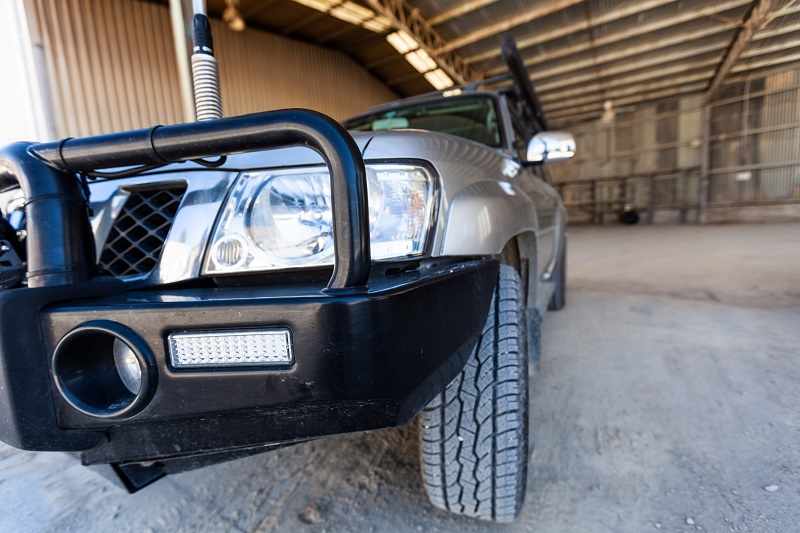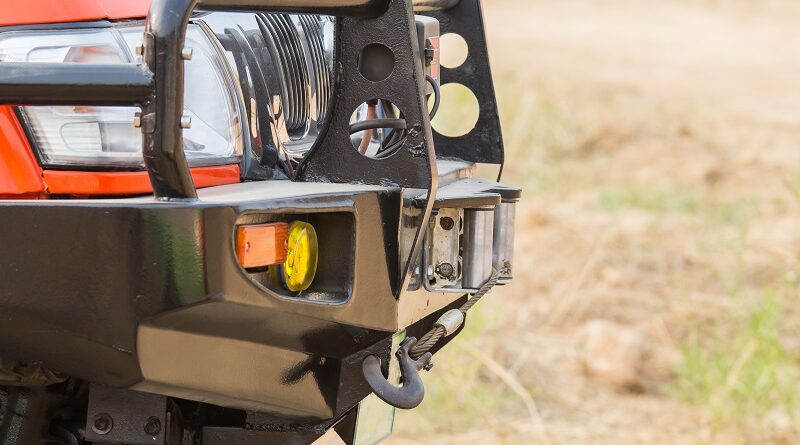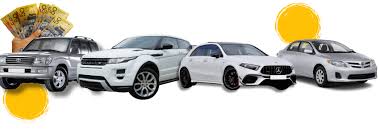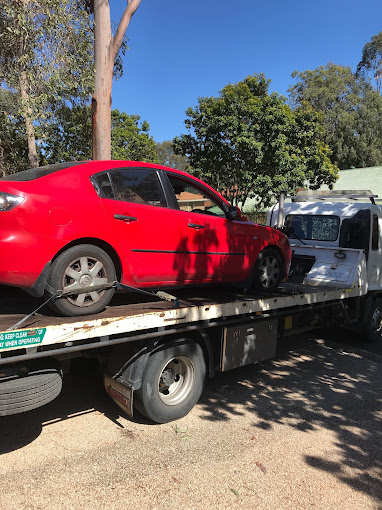Have you ever wondered if a bullbar could protect you from unexpected collisions on Australia’s roads? Or perhaps you’ve scrolled through social media, catching glimpses of rugged 4WDs equipped with impressive front-end armour, and thought, “Is that what I need?” In this all-in-one guide, we’ll explore everything you must know about choosing the best bullbars for your vehicle, no matter where you’re located in Australia.
Bullbars are more than just tough-looking accessories. They can prevent costly damage and offer an extra layer of protection in wildlife-prone regions. Plus, regulations differ from one state to another, so you’ll want to know the legal bits before you buy. Throughout this post, we’ll discuss what bullbars actually do, the different types on offer, and why each one matters. We’ll also tackle common questions, such as how bullbars may affect insurance or whether they might void your vehicle warranty.
Bullbar Basics
What Is a Bullbar?
A bullbar is a sturdy protective bar or grille attached to the front of a vehicle. Its main purpose is to shield the front end—including headlights, grille, and bonnet—from collisions with animals or minor obstacles. In Australia, bullbars are especially popular in rural and outback areas, where kangaroos and other wildlife frequently cross roads. They’re also common among 4WD enthusiasts who want added security when venturing off the beaten track.
Although some view them as purely aesthetic, bullbars serve a practical function. They help to minimise front-end damage, which can otherwise be incredibly expensive. Because Australia’s terrain varies greatly, from city streets to rugged bush tracks, drivers appreciate the peace of mind a bullbar provides.
Different Types of Bullbars
When choosing a bullbar, you’ll find three common materials: steel, alloy, and polyethylene. Steel bullbars are typically heavier but offer excellent durability. Alloy bullbars, however, are lighter, which can improve your vehicle’s fuel usage. Polyethylene options, though less common, can absorb impact well due to their flexible structure. Each type has its own strengths, so picking the right one depends on your driving style and environment.
How Do Bullbars Work in Preventing Damage?
Bullbars distribute the force of an impact across their frame, reducing the direct damage to your vehicle’s engine and vital components. This helps you avoid costly repairs, especially if you often drive in kangaroo or wildlife zones. The design of most bullbars also aims to minimise injury to pedestrians and animals by incorporating smooth edges or built-in crumple zones. Installing a bullbar isn’t just a random add-on—it’s a strategic choice that could save you time, money, and hassle in the long run.

Material and Design Considerations
Steel vs. Alloy: Which Is More Durable?
Steel bullbars are commonly praised for their durability and ability to withstand harder impacts. Alloy bars, on the other hand, can still handle moderate bumps while offering weight savings. This can be a big plus if you’re worried about load limits or if you drive a smaller 4WD. Your choice often hinges on where and how you plan to drive: a steel bar may be best for extremely rough terrain, while an alloy bar can be perfect for urban or mixed-use driving.
Light-Weight Options and Fuel Efficiency
Heavier bullbars can impact your vehicle’s fuel consumption. This is where materials like alloy or polyethylene shine. Their lighter weight can lead to better fuel efficiency, especially over long distances. If you routinely take extended trips say, across the Nullarbor Plain or up the Queensland coast—saving on fuel can make a noticeable difference in your travel costs. When weighing up your selection, consider both your driving environment and your potential budget for fuel.
Do Bullbars Affect Vehicle Performance?
Beyond fuel usage, a bullbar’s weight can also affect handling. Extra mass at the front may cause a dip in the car’s suspension or slightly alter steering feel. If you opt for a heavier option, you might need to upgrade your suspension or make other modifications. On the flip side, a lightweight bullbar generally has minimal impact on the ride. Balancing durability with performance is key, so pick an option that suits your day-to-day driving without causing unneeded strain on your vehicle.
Installation and Maintenance
Professional Installation vs. DIY Approaches
Some people enjoy a DIY challenge, but a bullbar isn’t your average accessory. Installing it involves attaching a heavy, sometimes bulky structure, and messing up could compromise safety. A professional installer ensures the bullbar is properly aligned, securely fastened, and adheres to local regulations. While DIY might save some cash, a botched job could undermine your bullbar’s effectiveness and put you at legal risk.
How Often Should Bullbars Be Inspected?
Regular inspections are essential. Busy roads, rough terrains, and even everyday bumps can loosen fittings or create cracks. Try to check your bullbar every few months, or before and after any long trip. Look for signs of rust, dents, or instability in the mountings. A quick inspection can alert you to potential issues early, so you can fix them and maintain your bullbar’s effectiveness.
Common Maintenance Mistakes to Avoid
An often-overlooked mistake is neglecting to clean behind and underneath the bullbar. Dirt, mud, and debris can accumulate, leading to corrosion or compromised bolts. Another common oversight is failing to re-tighten bolts periodically. Even the most robust bar can rattle loose over thousands of kilometres. Avoid these pitfalls by taking a few minutes to keep your bullbar clean and snugly secured.
Common Pain Points and Solutions
Will a Bullbar Void My Vehicle Warranty?
Vehicle makers usually permit accessories such as bullbars, provided they meet safety guidelines. However, they may not cover damage caused by improperly installed parts. If you’re concerned about your warranty, verify the official stance from your dealer or the manufacturer. Choose a brand or installer that aligns with your car’s specifications to minimise hassles.
Do Bullbars Affect Insurance Premiums?
Some insurers view bullbars as adding risk, while others consider them beneficial. In wildlife-heavy regions, a properly fitted bullbar may reduce your chance of major front-end damage, which can be a good point for insurers. Still, rate changes vary. Check your policy or ask your provider directly. If the insurer sees your bullbar as an added “modification,” it’s best to be upfront and confirm you’re correctly covered.
Are Bullbars Necessary for Country or Regional Roads?
On remote or regional roads, animals often appear suddenly. A bullbar can be a lifesaver in such settings. Even in outer suburban areas where wildlife is common, a bullbar provides an extra buffer. In purely urban environments, they might be less critical, but many city drivers still value the added protection and rugged look.
Final Thoughts and Recommendations
Choosing the right bullbar can sometimes feel overwhelming, given the variety of styles, materials, and regulations. However, it doesn’t have to be a stressful process. First, define your needs: Are you driving in remote country regions, facing wildlife hazards at night, or simply wanting extra style in urban areas? Knowing your priorities will narrow down the suitable bullbar types.
Finally, remember that professional installation adds to your peace of mind, plus it helps keep things compliant. Just as crucial is regular maintenance—inspect bolts and brackets, clear out grime, and watch for wear and tear. With these key points in mind, you’ll likely find the bullbar that suits both your vehicle and your driving conditions. Done right, a bullbar can be a sturdy ally on all of Australia’s roads.
Conclusion
Picture this: you’re driving through the Australian countryside, the sun setting on the horizon, and a kangaroo suddenly bounds in front of your vehicle. In that crucial moment, a well-built bullbar can significantly reduce the damage you might otherwise face. It’s not merely a decorative feature; it’s a safeguard that can protect you, your passengers, and your wallet.
Summing up, choosing the right bullbar means weighing a few key factors. Material choice is another big decision: steel, alloy, or polyethylene can each fit different lifestyles and terrain challenges. Installation and maintenance ensure the bullbar stays reliable, while an awareness of insurance and warranty considerations can save you from unpleasant surprises.








